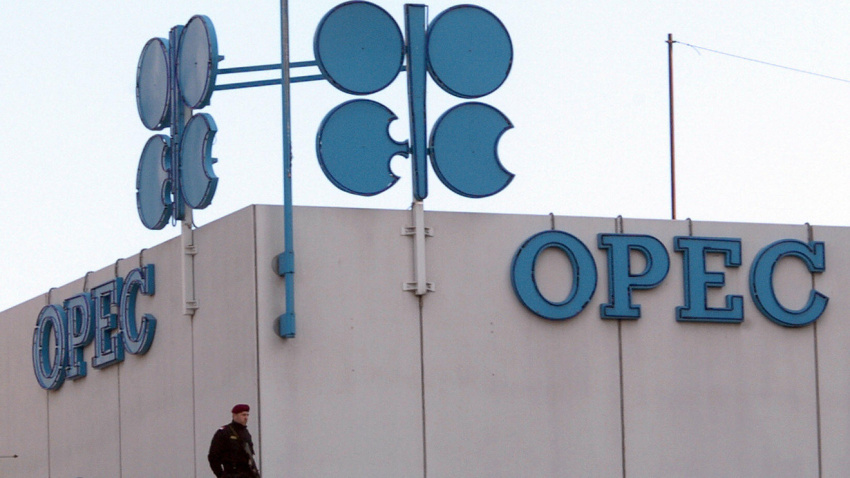Time for OPEC to Display Unity

Three and a half years ago, during the last month of Fall 2014: Ali Al-Naimi, then Saudi Minister of Petroleum and Mineral Resources, in a joint effort with his allies blocked OPEC output cut efforts, restoring the organization’s overall production to 30 million barrels per day. Naimi did this with two goals in mind: to boost Saudi Arabia’s market share and to counter any production increase in US Shale. The veteran Saudi oil minister had fervidly stated his goals in an OPEC meeting held behind closed doors. Oil prices started to plunge drastically afterwards, slipping from $100 per barrel to $70 and it was expected to continue plummeting even further.
Simultaneously, other OPEC members including Algeria and Venezuela tried to convince OPEC to cut the output by 1 million barrels a day in an attempt to arrest the ongoing slide. However, Saudi Arabia stood its ground and OPEC finally agreed to keep the output intact. The oil prices plummeted even further, reaching a record low of $30 per barrel. However, against the Saudis initial assumption, not only did not the US shale production decrease, but it rose after a period of fluctuation.
This historic experience stands before us today. Now, under the US duress and in line with sanctions on Iran and Venezuela, Saudi Arabia and a number of its allies are trying to increase OPEC production by 1 million barrels per day, overlooking the fact that the supply-cut agreement, struck by OPEC and non-OPEC producers during the past one and half year, was basically designed to maintain the balance in the prices. In his interview with Reuters, Iran’s OPEC governor, Hossein Kazempour Ardebili, made important remarks which sparked worldwide attention. He said that the US request for Saudi Arabia to pump more oil so that it could cover a drop in Iranian exports is “crazy and astonishing”, adding that OPEC is unlikely to welcome the appeal as no one in OPEC will act against two of its founding members. He also reminded that during the previous round of sanctions against Iran the oil prices got to $140 a barrel. How should Iran maneuver in these circumstances?
The fact is that oil barrels have the ultimate say about everything in OPEC. A country’s power is measured by its production and inventories. However, this is only part of the truth. Lobbies and effective diplomacy as well as making efficient use of organizational identity are equally effective means. Iran’s Petroleum Minister Bijan Zangeneh has to actively lobby with other OPEC ministers during OPEC’s two-day meeting, slated to be held before OPEC 174th meeting. Some OPEC members will gain nothing from supply increase, or at least they are going to make little profit from that. Iran can work with Algeria and Venezuela to convince Equatorial Guinea and Ecuador to endorse its proposal in the organization. This would also help the public opinion not to think that the US is actually running the organization. Iraq and Qatar can be potentially helpful too. Apparently, Kuwait is also not happy with the attempts to annul the output-cut agreement before the end of 2018. One of the major tasks of Zangeneh during OPEC seminar is to align with these countries and other OPEC members. Should he fail to attend the seminar, a significant diplomatic chance will be squandered.
There have been calls by some OPEC members to increase the supply at least by 300 to 400 thousand barrels, should they fail to convince the others for a one-million-barrel increase. However, they are ignoring the fact that any such move will sink the historic supply-cut agreement into oblivion. President Rouhani is now in China to attend the Shanghai Cooperation Organization summit. He is expected to meet Putin, the Russian president, on the sideline of SCO summit. It seems to be a good opportunity for the president to discuss with Russia the necessity to maintain the supply-cut agreement. Russia is the most important non-OPEC contributor to this agreement. This is crucially important for everyone to know that neither Russia nor the US is running the organization. OPEC has 14 members and decisions should be made with consensus of all members while taking into consideration interests of every and each member. We are waiting to see once again the unity displayed by the most influential organization of the Third World countries. OPEC members can make use of past lessons when everyone benefited from working together, and when all were harmed by the members’ disunity. The oil prices slipped to $30 at the time of disunity, but it got to $70 when a single voice was heard from all members.
* This piece was originally published in Hamshahri Newspaper. Reza Zandi is a senior journalist and analyst in the field of oil and energy.

